Ultra-Strong Acid Desulfurization Catalyst Containing Tungsten Trioxide
- Details
- Category: Tungsten Information
- Published on Tuesday, 03 May 2016 18:07
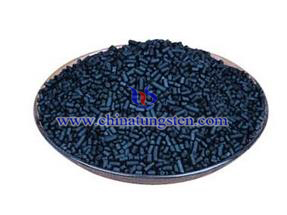 The sulfide in the In the fuel will unavoidable release into the air in the form of gas when in the combustion process, which will probably causes a series of issues that destroying ecosystems like acid rain, damaging buildings. As the improving of people's awareness of environmental protection and vehicle fuel emission standards, increasingly strict restrictions on the sulfur content of fuel oil index has been worked out, therefore, the production and using of ultra-low sulfur fuel oil is imperative. In deep desulfurization, the application of traditional method of hydrodesulfurization (HDS) has been limited, because of its disadvantages such as harsh reaction conditions, equipment investment and higher operating costs.
The sulfide in the In the fuel will unavoidable release into the air in the form of gas when in the combustion process, which will probably causes a series of issues that destroying ecosystems like acid rain, damaging buildings. As the improving of people's awareness of environmental protection and vehicle fuel emission standards, increasingly strict restrictions on the sulfur content of fuel oil index has been worked out, therefore, the production and using of ultra-low sulfur fuel oil is imperative. In deep desulfurization, the application of traditional method of hydrodesulfurization (HDS) has been limited, because of its disadvantages such as harsh reaction conditions, equipment investment and higher operating costs.| Tungsten Oxide Supplier: Chinatungsten Online www.tungsten-oxide.com | Tel.: 86 592 5129696; Fax: 86 592 5129797;Email:sales@chinatungsten.com |
| Tungsten News & Prices, 3G Version: http://3g.chinatungsten.com | Molybdenum News & Molybdenum Price: http://news.molybdenum.com.cn |
Steel Joining Process of Tungsten Carbide Roller (2/2)
- Details
- Category: Tungsten Information
- Published on Tuesday, 03 May 2016 15:53
Tungsten carbide consists of refractory metal carbide as the matrix and binder metal fabricated by powder metallurgy, which has many differences in mechanical properties with common steel (cast iron, cast steel, carbon steel, etc.). Especially the difference in linear expansion coefficient is the key factor of affecting the connecting property directly, which is easy to produce internal stress in the joints. If the stress exceeds the tensile strength of the cemented carbide, carbide will lead to cracking. In addition, due to the particularity of cemented carbide, the common methods are hot charging, casting, hot isostatic pressing, welding and cementing method in which the WC composite cast iron and soldering processes and solder wettability is poor.
Hot charging method uses the inner interference to thermal inner and outer layers together. The process requires tungsten carbide must have a certain thickness of the outer ring to avoid ring cracking under tension effect. So the biggest defect of the process is the consumption of tungsten carbide, which can not save the cost. The cementation method, as the name suggests is to use an epoxy resin adhesive polymer inner and outer ring are bonded together. But since he adhesive properties of the physical and chemical limits such composite roll through the process of the preparation can not be used at high temperature and pressure environment, under the alternating stress and mechanical stress joint action, is extremely prone to surface cracking phenomenon.
Thus, the three methods currently used mainly casting, hot isostatic pressing and welding. Casting is a method of pre-plating the outer layer of metal carbide as a buffer layer, using the casting method in conjunction with the iron carbide into a composite outer roll. CIC (cast in carbide) can casting carbide ring and ductile iron and form a strong metallurgical connection, so that the stress distribution can be dispersed cemented carbide. Tungsten carbide outer ring can with high hardness and excellent wear resistance withstand pure rolling force, and ductile iron with good toughness can deliver the rolling moment by the connection with tungsten carbide ring. But there are also casting some technical problems, such as the casting process is difficult to obtain precise control, so that will cause the quality of the composite roll stability can not be guaranteed.
| Tungsten Carbide Supplier: Chinatungsten Online tungsten-carbide.com.cn | Tel.: 86 592 5129696; Fax: 86 592 5129797;Email:sales@chinatungsten.com |
| Tungsten News&Tungsten Prices, 3G Version: http://3g.chinatungsten.com | Molybdenum News & Molybdenum Price: http://news.molybdenum.com.cn |
Steel Joining Process of Tungsten Carbide Roller (1/2)
- Details
- Category: Tungsten Information
- Published on Tuesday, 03 May 2016 15:51
With the rapid development of technology, the corresponding requirements of rolling industry are also increasing. Roller is the important part of mill, which uses a pair or a set of roller to roll the steel. It mainly endures static and dynamic loads during rolling, abrasion and temperature changes. Common roll hardness testing are Shore and Leeb hardness testing, both of which are rebound hardness testing, surface hardening hardness can reach HS45-105.
However, the roller made by single material has been difficult to meet the changing requirements of rolling today. Although using coating process can guarantee the achievement of specified performance requirements, there are some matching problems in the binding strength between coating layer and the matrix, the coefficient of thermal expansion and other parameters. Furthermore, the higher cost is also the obstacle in the way of promoting.
Composite roller has uniform structure, high density and stable rolling properties, which has become one of the hotspot of many relevant researchers at home and abroad. Tungsten carbide composite roller by steel joining process, on the one hand, it has the advantages of tungsten carbide, such as high hardness, high density, excellent wear resistance and corrosion resistance and low coefficient of thermal expansion; on the other hand, it makes full use of the strength and toughness of steel, which makes tungsten carbide composite roll can meet the most of rolling industry.
Theoretically, connection of different materials is usually difficult than the connection of the same material. This is due to the quality of the connection of different materials not only be affected by the performance of physical and chemical properties of the material itself, which to a greater extent also depends on the performance of the two materials match or not. Tungsten carbide consists of refractory metal carbide as the matrix and binder metal fabricated by powder metallurgy, which has many differences in mechanical properties with common steel (cast iron, cast steel, carbon steel, etc.).
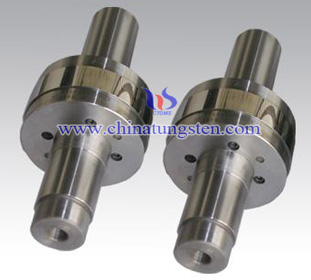
| Tungsten Carbide Supplier: Chinatungsten Online tungsten-carbide.com.cn | Tel.: 86 592 5129696; Fax: 86 592 5129797;Email:sales@chinatungsten.com |
| Tungsten News&Tungsten Prices, 3G Version: http://3g.chinatungsten.com | Molybdenum News & Molybdenum Price: http://news.molybdenum.com.cn |
Dragon Tungsten Gold Plated Bar
- Details
- Category: Tungsten Information
- Published on Tuesday, 03 May 2016 11:42
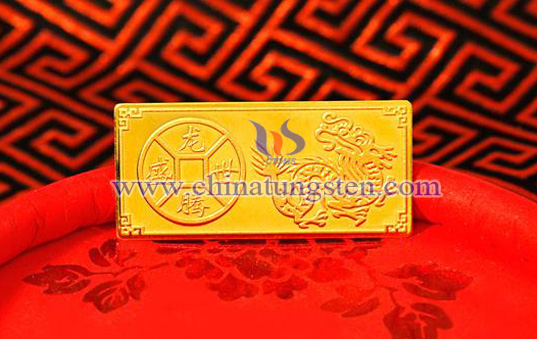
| Zodiac Tungsten Gold Supplier: Chinatungsten Online tungsten-alloy.com | Tel.: 86 592 5129696; Fax: 86 592 5129797;Email:sales@chinatungsten.com |
| Tungsten News & Prices, 3G Version: http://3g.chinatungsten.com | Molybdenum News & Molybdenum Price: http://news.molybdenum.com.cn |
Tiger Tungsten Gold Plated Bar
- Details
- Category: Tungsten Information
- Published on Tuesday, 03 May 2016 11:36
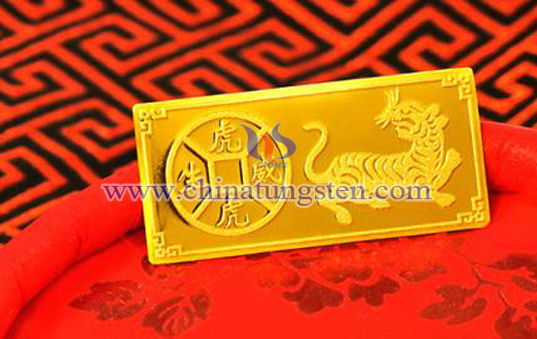
| Zodiac Tungsten Gold Supplier: Chinatungsten Online tungsten-alloy.com | Tel.: 86 592 5129696; Fax: 86 592 5129797;Email:sales@chinatungsten.com |
| Tungsten News & Prices, 3G Version: http://3g.chinatungsten.com | Molybdenum News & Molybdenum Price: http://news.molybdenum.com.cn |
Manufacturing Process of Tungsten Crucible-Sintering
- Details
- Category: Tungsten Information
- Published on Tuesday, 03 May 2016 11:29
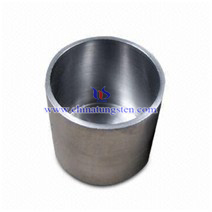
Intermediate frequency sintering is mainly applied in powder metallurgy process, especially in producing the relatively large workpieces or requiring for a higher firing temperature, and then the firing method must be used. Wolfram is often used as firing equipment for intermediate frequency sintering, since the high melting point of wolfram which just below the melting point of the carbon. In addition, in case of high temperature, wolfram still has a high mechanical strength and hardness. Therefore, nowadays, the intermediate frequency firing furnace main adopt tungsten crucible.
The process of firing mainly through five steps: preparation of raw materials, shake raw materials evenly. After mixing, assort the materials in a proper proportion. Mixing those raw materials and pelletizing them. Furthermore, spread the firing materials on the firing pallet for firing. Finally, freeze the finished product. Under the conditions of the high temperatures produced by fuel and a series of chemical reactions of tungsten granules, some soluble materials of mixture would soften and partially melt, producing an amount of liquid, wetting particles which are not melted. In the cooling process, the liquid will paste particles into a massive form, this process is called firing.
Wolfram crucible is commonly formed by welding and powder metallurgy technology with inert gas. The thickness of the wolfram crucible formed by welding is generally less than 3 mm, life time and heating performance of this type of wolfram crucible are not as good as wolfram crucible which is made by powder metallurgy technology. Wolfram crucible for firing can ensure that the uniformity furnace temperature and the fast speed for heating. Therefore, wolfram crucible is one of the necessary equipment for the firing process. Wolfram crucible has a longer life which has a less impact on the environment, and it can be repeatedly used to control environmental pollution produced by firing.
Control of temperature is very important to the firing process, since grain-boundary diffusion and volume diffusion rely heavily upon temperature, the size and distribution of particles of the material, the materials composition, and often the firing environment to be controlled. When using wolfram crucible for firing, users should pay attention to improve the production installed furnace conditions in order to avoid negative phenomena, such as sliding produced by controlling the shrink of lower part of wolfram crucible, which has a great impact on avoiding producing waste and defective products.
| Tungsten Metals Supplier: Chinatungsten Online www.tungsten.com.cn | Tel.: 86 592 5129696; Fax: 86 592 5129797;Email:sales@chinatungsten.com |
| Tungsten News & Prices, 3G Version: http://3g.chinatungsten.com | Molybdenum News & Molybdenum Price: http://news.molybdenum.com.cn |
Characteristic of Tungsten Crucible for Sapphire Growth
- Details
- Category: Tungsten Information
- Published on Tuesday, 03 May 2016 11:25
Sapphire single crystal growth furnace often works with wolfram products which produce production by 99.95% purity of tungsten raw materials, including wolfram crucible, wolfram plate, wolfram sheet, wolfram electrode shield, wolfram tube, wolfram heat shield and other wolfram products. Thanks to the highest melting point of all metals, wolfram crucible is widely applied in sapphire single crystal growth furnace.
It is uncommonly to use wolfram crucible itself as the heating element for single crystal growth furnace, and wolfram crucible would volatize wolfram atoms at high temperatures. It is also possible to adopt wolfram crucible itself as a heat element, but the choice of the manufacturing process and the setting of operation temperature are the most critical factors. Due to differences in manufacturing process of wolfram crucible, sapphire single crystal growth furnace generally use sintering tungsten crucible in China.
Characteristic of tungsten crucible for sapphire growth is that wolfram crucible can avoid sticking the pot. During the process of sapphire single crystal growth, it is easy to stick the pan, but wolfram crucible is high temperature resistant refractory metal which is difficult to produce the chemical reaction. So wolfram crucible can protect purity of sapphire well. Sapphire growth by kyropoulos method requires for a better temperature field device, the quality of spinning wolfram crucible is excellent, the purity and density is relatively high, but prices are high.
On the other hand, wolfram crucible cannot be placed immediately on a cold metal table after heating, otherwise it will crack. Most of the thickness of the wolfram crucibles are relatively thin which is not conducive to long-term using, the number of reusing is poor which will increase the cost of sapphire single crystal growth.
As an important technology, sapphire crystal has been widely used in many fields of science and technology, defense and civilian industries, electronic technology. Chemical properties of sapphire crystal are very stable which would not dissolve in water. In addition, it would not corroded by acid and alkali, only at a higher temperature (300 ℃) can it be corroded by hydrofluoric acid, phosphoric acid and molten potassium hydroxide eroded. Therefore, the choice of wolfram crucible for a sapphire single crystal growth furnace should base on the manufacturing process of sapphire single crystal and the conditions of single crystal sapphire single crystal growth furnace.
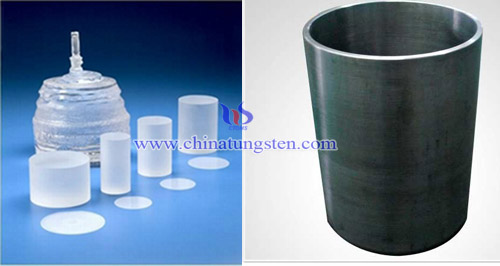
| Tungsten Metals Supplier: Chinatungsten Online www.tungsten.com.cn | Tel.: 86 592 5129696; Fax: 86 592 5129797;Email:sales@chinatungsten.com |
| Tungsten News & Prices, 3G Version: http://3g.chinatungsten.com | Molybdenum News & Molybdenum Price: http://news.molybdenum.com.cn |
Sodium Tungsten Bronze(3/3)
- Details
- Category: Tungsten Information
- Published on Friday, 29 April 2016 18:33
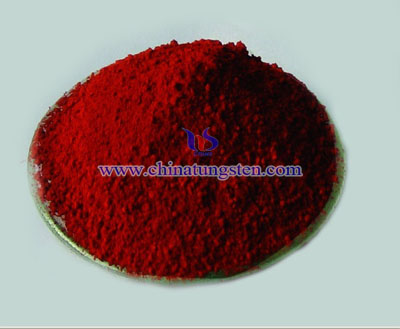
| Tungsten Oxide Supplier: Chinatungsten Online www.tungsten-oxide.com | Tel.: 86 592 5129696; Fax: 86 592 5129797;Email:sales@chinatungsten.com |
| Tungsten News & Prices, 3G Version: http://3g.chinatungsten.com | Molybdenum News & Molybdenum Price: http://news.molybdenum.com.cn |
Sodium Tungsten Bronze(2/3)
- Details
- Category: Tungsten Information
- Published on Friday, 29 April 2016 18:29

| Tungsten Oxide Supplier: Chinatungsten Online www.tungsten-oxide.com | Tel.: 86 592 5129696; Fax: 86 592 5129797;Email:sales@chinatungsten.com |
| Tungsten News & Prices, 3G Version: http://3g.chinatungsten.com | Molybdenum News & Molybdenum Price: http://news.molybdenum.com.cn |
Sodium Tungsten Bronze(1/3)
- Details
- Category: Tungsten Information
- Published on Friday, 29 April 2016 18:27
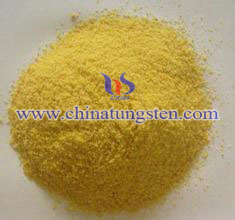
| Tungsten Oxide Supplier: Chinatungsten Online www.tungsten-oxide.com | Tel.: 86 592 5129696; Fax: 86 592 5129797;Email:sales@chinatungsten.com |
| Tungsten News & Prices, 3G Version: http://3g.chinatungsten.com | Molybdenum News & Molybdenum Price: http://news.molybdenum.com.cn |



 sales@chinatungsten.com
sales@chinatungsten.com